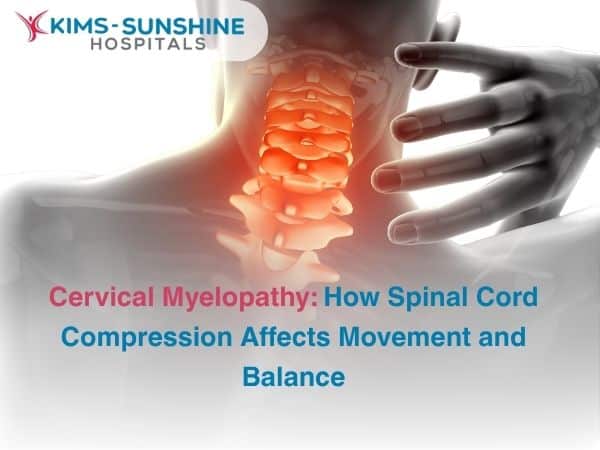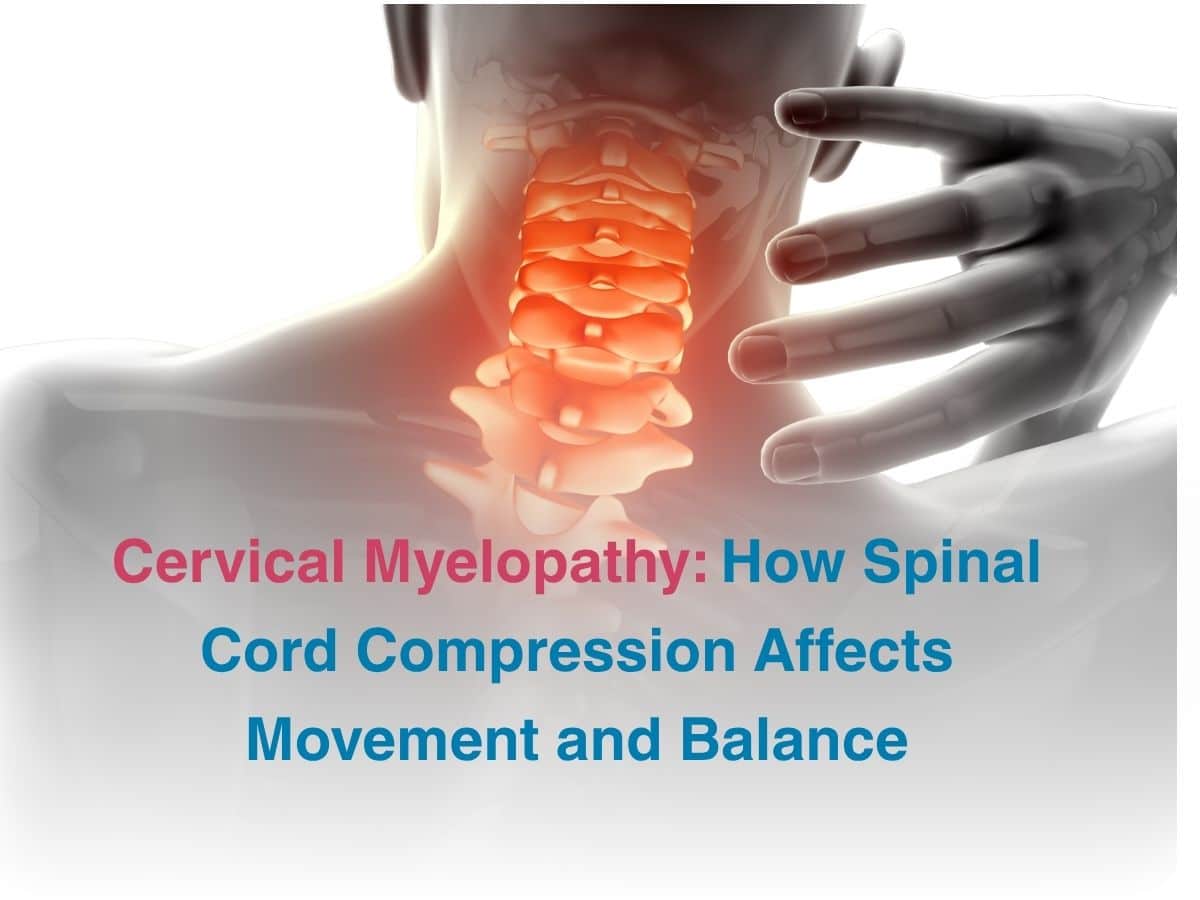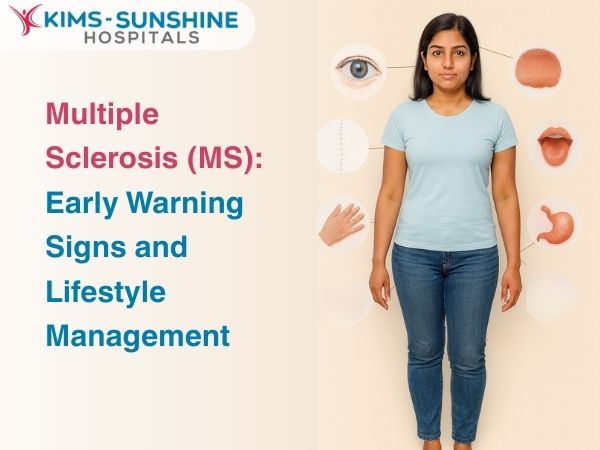
Cervical Myelopathy: How Spinal Cord Compression Affects Movement and Balance
 The cervical nerves are 8 pairs of nerves that are found to emerge from the cervical region of the spine- which is the set of bones which connect your skull to the torso of your body, at the neck. Myelopathy is the condition where the nerves of a particular region in the spine get compressed, leading to pain, numbness and other sensory related symptoms. Cervical myelopathy is a common condition in people who already have cervical spondylosis- and studies have shown that over 60% of such individuals go on to develop cervical myelopathy due to advancing age and other related factors, in the Indian subcontinent.
The cervical nerves are 8 pairs of nerves that are found to emerge from the cervical region of the spine- which is the set of bones which connect your skull to the torso of your body, at the neck. Myelopathy is the condition where the nerves of a particular region in the spine get compressed, leading to pain, numbness and other sensory related symptoms. Cervical myelopathy is a common condition in people who already have cervical spondylosis- and studies have shown that over 60% of such individuals go on to develop cervical myelopathy due to advancing age and other related factors, in the Indian subcontinent.
What Is Cervical Myelopathy?
When the cervical nerves located in your neck get compressed due to a herniated disc or some such cause, you will have to deal with cervical myelopathy. Any traumatic injury or a spinal tumour located in that region can also press on the nerves, causing a host of signs and symptoms. This condition is most commonly found in older individuals- as the spine with its disks, bones and ligaments get worn down and lose strength and flexibility.
Causes Of Spinal Cord Compression-
We know that cervical myelopathy occurs because of pressure on the cervical nerves. So, let us look at some causes below-
- If you have a herniated disc.
- If you have a congenital defect where your cervical canal of the spine is narrow.
- If you have cervical spondylosis
- If you have any kind of spinal degeneration
- If you have a spinal tumour located in the cervical region
- If you have had any traumatic injury
- If you have autoimmune conditions like rheumatoid arthritis
- If you have bone spurs growing in the cervical region.
This condition is more commonly diagnosed in older men, though onset can occur as early as age 40 onwards.
Symptoms Of Cervical Myelopathy-
Common symptoms of this condition include neck pain and stiffness, numbness or tingling due to the compressed nerve – of the arms and hands and some muscle weakness too, at times. People may have issues with fine motor skills like picking things up, buttoning up shirts or clothes or knitting or even eating food with spoons and forks. You may also have similar issues in your legs or extremities, as all nerves are connected in the body.
Cervical Myelopathy Diagnosis (MRI, Neurological Exam)-
A proper diagnosis of a neurological condition like this one requires the use of a physical exam, a neurological exam – where they check for reflexes and coordinated movement of different body parts. They will look at your gait, mobility and try to understand how much sensation can be perceived. They will also try to check for cognition and speech changes, if you have had a traumatic injury causing your symptoms, along with other tests.
Imaging is a major part of diagnosis- and your doctor can ask you to get an X-ray, MRI, CT scan or a myelogram, if necessary.
Non-Surgical Treatments For Cervical Myelopathy-
Since cervical myelopathy is a chronic condition which has no cure, you need to learn to manage it effectively. Conventional methods of treatment include the use of a neck brace,. Taking pain killers and getting regular physical therapy done, to help improve range of motion and reduce stiffness and related pain. Corticosteroids are prescribed if the cervical myelopathy is being caused by an autoimmune disease.
Surgery Options For Spinal Cord Compression-
Surgery is considered if all non surgical methods of treatment have ceased to work for you. When you have severe neck pain, loss of fine motor control, numbness, stiffness and are also having issues with your balance- your doctor may talk to you about getting a diskectomy, laminectomy or disc replacement surgery done. Spinal fusion is a good idea at times- where your surgeon may decide to fuse two or more vertebrae together- to improve stability and support and reduce pain. Bear in mind though, that these are major surgeries, even if they may be minimally invasive and you should take good care of yourself afterwards, so you recover well.
Conclusion
Cervical myelopathy cannot be prevented as such, but can be managed by most individuals if the extent of compression is mild. The use of surgery is not often recommended, unless your daily quality of life suffers majorly. You should remember however that since cervical myelopathy is a degenerative condition, it will get worse over the years. You will hence need to decide how you would like to take care of yourself- and your doctor will be able to help you out in that regard.






